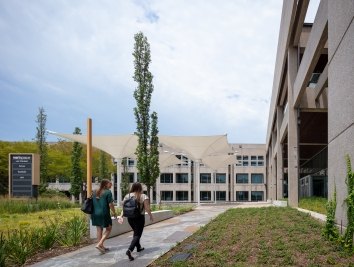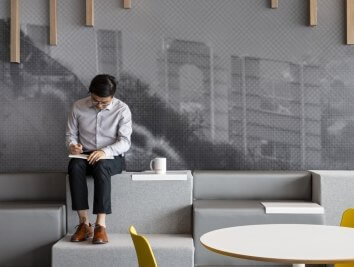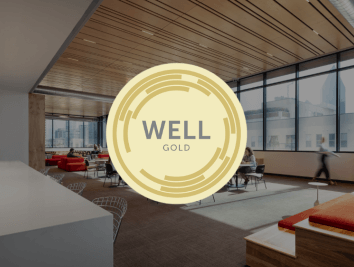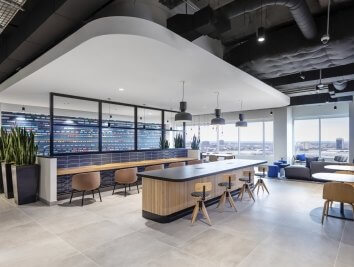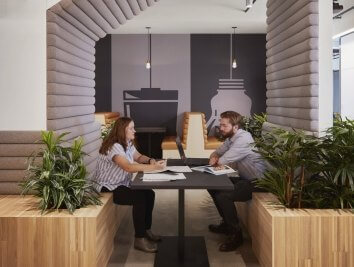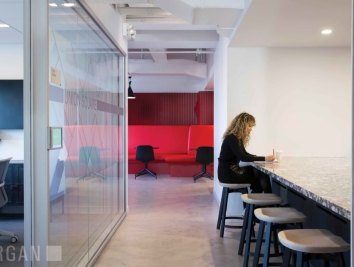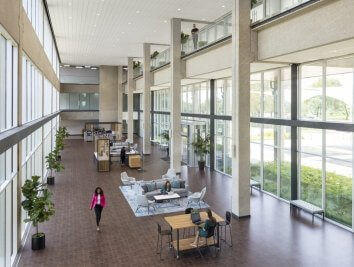Dining Al Desko?
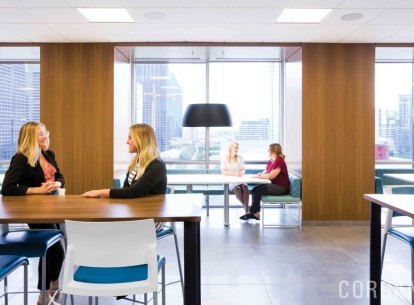
Why eating alone at work is bad for everyone.
Eating alone isn't fun. It's also unhealthy.
That kale salad may not be as healthy as you think if you are eating it alone at your desk. Dining “al desko” proliferates unsanitary bacteria and unsavory odors create added stress, promotes overeating, and, perhaps worst of all, isolation. Feeling excluded has been shown to be more detrimental to an individual’s well-being than being harassed or bullied but is often better disguised as being too busy to step away from the desk.
Friendships are not just for the classroom or sandbox; rather, strong workplace relationships, or the lack of them, can mean serious business for the bottom line. Whether it is a group to grab lunch with or a mentor, healthy relationships help manage work-related stress, increase motivation and engagement, and simply make the office more fun. And, while open offices are great, it’s these relationships and daily conversations that lead to creating a sense of community, increasing productivity, and improving retention.
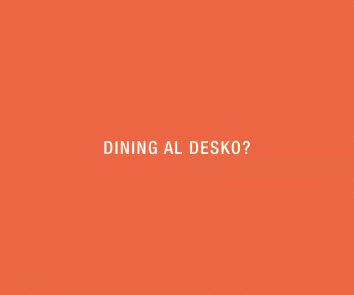
What happens when this sense of community goes missing and instead of catching up with colleagues at lunch, employees spend their lunch catching up on emails? A rhythm of small breaks and social connections can boost productivity, providing a reinvigorating respite from long or monotonous tasks, and help in idea-sharing and problem-solving. Whereas employees who do not feel like they belong are more likely to feel dissatisfied with their job, struggle with their performance and productivity, and eventually leave the organization.
So, if we know job isolation can have serious implications and if we know what we’re missing out on when an employee is left out, what can we do about it?
1. Create a destination kitchen
No matter where you are in the world, people tend to gather around the kitchen—attracted by our collective memories of warmth, comfort, sustenance, and familiarity. A thoughtful, purposeful, and sophisticated break area replicates that feeling. If a big kitchen isn’t in the cards, a big “kitchen table” can help gather staff around a common table to share and debate their best ideas over a latte and healthy snacks. Either way, make the break area the town center—encouraging social bonds, connectivity and putting the community on display.
2. Reshape your community space—literally
A circle is the shape of community. It’s like two arms embracing you. In the circle, there is no hierarchy and you feel like an equal where no matter where you are in the circle. Introducing circular elements like a pendant fixture over a large round table in the center or the break room can bring people together. Laying out informal stools around a “campfire” can also do the trick.
3. Democratize views of the outdoors
While we’ve made progress in moving private offices to the internal core and relocating open work areas to the perimeter, there’s an opportunity to move shared and respite spaces to the areas where employees can most benefit from access to natural light and views of the outdoors. In urban cores, this can mean access to a balcony or rooftop garden but where that isn’t possible, quiet spaces adjacent to these coveted outdoor views offer inviting moments to find balance in their day—stepping away from their desk to clear their mind, refresh and recharge.
4. Don’t grab the wrong end of the stick
Be honest and thoughtful about what works and what doesn’t. Too many ping pong tables end up pushed in the corner or stacked with boxes of holiday decorations. A survey or town hall can better help gauge interests and needs when selecting the most appropriate amenities and break area design. Remember, not everyone is an extrovert. Forcing all personalities to adopt a large communal open environment without allowing a choice in the level of engagement and privacy can make the best of intentions fall short. Don’t sacrifice phone rooms and small meeting rooms for a large “all hands” space; instead, a collaborative design process can help accommodate the diverse preferences and workstyles of an office. And, while workspace density is important, overemphasizing it could mean shortchanging employees on amenities and shared spaces. Balance is key. A more thoughtful approach can help identify tradeoffs, reduced desk size in exchange for a slightly larger kitchen, for example, that may have a more meaningful impact on employee engagement, productivity, and overall health.
Ditch your sad desk lunch
After designing over 50 million square feet of workplace interiors in the past five years including the first WELL Certified building in Texas, Corgan is empowering clients with the research and expertise they need to prepare for the next generation of healthy, more human buildings. With employees spending 90% of their time indoors, Corgan and WELL help clients identify common shortcomings and practical, budget-friendly interventions to care for their building’s biggest asset—the people inside.





